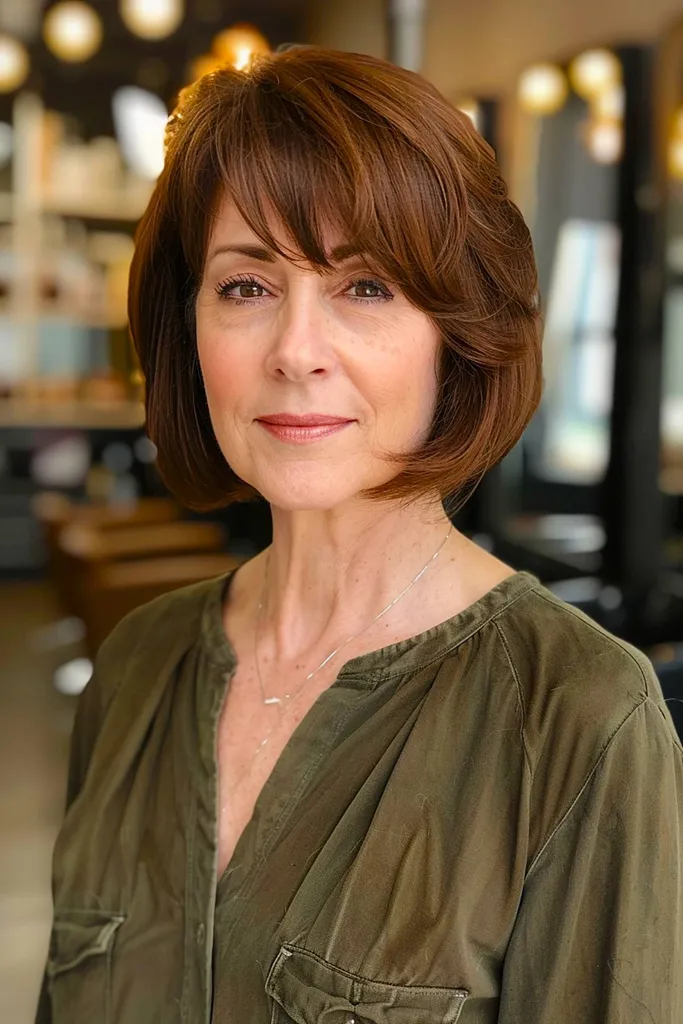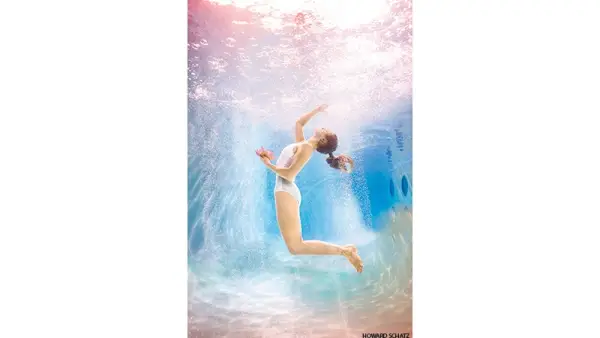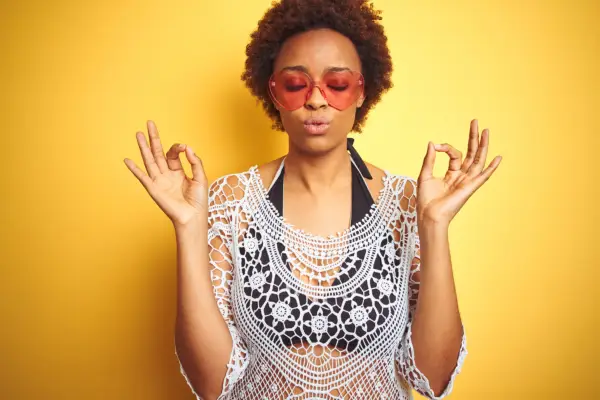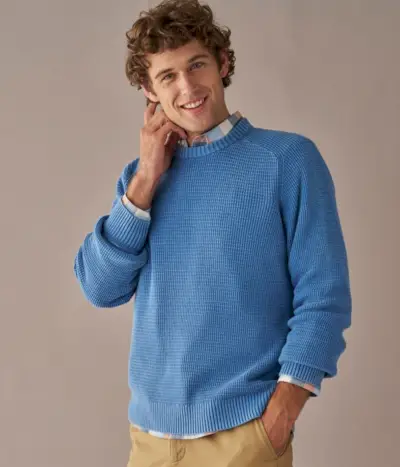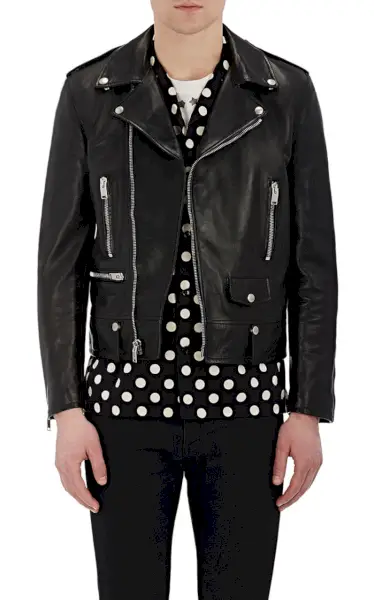Despite the fact that I’m rarely motivated to try a new-to-me yoga class—especially at one of the many big-box-style studios popping up everywhere with their sleek cubbies and branded tank tops—I recently stepped outside my comfort zone to take a class at YogaSix. Billed as a modern yoga boutique, the brand has opened more than 200 locations across the U.S., quickly becoming didžiausia jogos franšizė JAV ir išsiplėtė tarptautiniu mastu Vokietija ir Japonija . In a post-pandemic time when many independent studios have closed their doors, that kind of growth is hard to ignore. So while I prefer practicing yoga at small, independent studios, I signed up for a restorative class at my local YogaSix to see what’s drawing so many people in. Having practiced an array of yoga styles for more than a decade, I wondered whether this modern, chain-studio version of yoga could possibly work for someone like me.
Daugeliui galiu manyti, kad struktūrizuotas formatas, nuoseklus studijos prekės ženklas ir bendruomenės jausmas, atsirandantis dėl to, kad čia yra nuolatinis, gali patikti jogos naujam asmeniui ar ieškoti mažai barjero įėjimo taško. Įvedamas į pažįstamą erdvę, nesvarbu, kuriame mieste esate. Tai yra franšizės patrauklumas, tiesa? Jūs žinote, ko tikėtis, nesvarbu, koks miestas ar studija.
„Yogasix“ nesiūlo tradicinių jogos užsiėmimų (taip pat jie to nepretenduoja), tačiau daugiau sintezės stiliaus, kuris išpopuliarėjo daugelyje sporto salių ir studijų. Aš pasirinkau „Y6 Restore“, kuris apibūdinamas kaip praktika išleisti pagrindines viso kūno raumenų grupes ir vyksta šiltame kambaryje. Aš paprastai vengiu šildomos jogos kaip asmeninės pirmenybės, tačiau man buvo įdomu, kad studijos pasirinkimas pridėti šiltą aplinką prie jogos stiliaus, žinomo dėl atpalaiduojančių ir lėtų judesių.
Despite my initial panic when I started to sweat before class even began, I tried to keep an open mind. The room was dark, which was ideal, but when dramatic neon blue and green stage lights turned on, the room felt more like a nightlife venue than a yoga studio to me.
Vis dėlto jautėsi raminanti ir sveikinanti, kad mokytojas jau buvo sukūręs kiekvieno studento rekvizitus prieš atvykstant. „Yogasix“ turi savo „Bolster“ versiją, kurią jie vadina pagalve. Jis yra sustiprintos formos, tačiau jis taip pat yra labai minkštas ir nėra toks tvirtas kaip tipiškas. Kai aš jį naudojau po kojomis Savasanoje, jis pasiūlė mažiau palaikymo, nei buvau įpratęs prie apatinės nugaros dalies. Mokytojas taip pat davė mums aksominių pagalvių užvalkalą, kad galėtume jas uždėti, o tai surinko mano vidinį gemalų keistuolį. (Daugelyje studijų jūs tiesiog taikote taiką dėl to, kad rekvizitai buvo daug naudojami ir tikriausiai įsisavino daug prakaito. Stenkitės apie tai per daug negalvoti.)
For the majority of the class, the vibe was a hybrid between a stretching class and physical therapy, except when it turned into a workout class, in which the teacher cued reps of Chair Pose. She mostly offered verbal cues, which were a little too vague to follow without a visual demonstration. There were very few variations offered and, more than once, I found myself lingering in limbo because I didn’t want to do the stretch as she showed it, but I didn’t know what else to do with my body.
She did, however, make an intentional effort to cue students to breathe multiple times throughout class, which I appreciated. She guided our awareness to specific areas of the body—like the ribs and belly—where we could direct the breath. Her prompts to notice where the breath is in different poses helped me deepen my stretches and relax more fully into each posture.
In the Y6 Restore class I attended, the teacher put her hands on me to adjust my leg in Reclining Hand-to-Big-Toe Pose without asking. I was surprised and disappointed, as in recent years, there’s been increased awareness surrounding student consent when it comes to a teacher’s hands-on adjustments. Different studios tend to handle the matter differently. Some have strict policies, whereas others leave it to the teacher’s discretion. In my class, when the teacher later returned to offer an adjustment, she did ask for consent beforehand, and when I said no, she respected that.
While in Corpse Pose at the end of class for Savasana, Etta James played loudly while the teacher handed out cold lavender-scented towels for our eyes during the final resting pose. (I don’t mind Etta, but this felt out of place to me.)
For a week following my class, I received several texts, calls, and voicemails from both a wellness advisor and the yoga teacher at Yoga Six asking me if I was interested in continuing my yoga journey with them. I’m not used to that level of follow-up after a first class and it turned me off to the experience. (I usually practice at small, independent studios where that kind of post-class outreach isn’t the norm.) After the fifth time I was contacted, I opted to block the number. Ultimately, this wasn’t the type of yoga class I want to take again.
Of course, this was just one class at one YogaSix studio with one teacher. I can’t speak for the entire brand or the experience someone else might have in a different class or city. But I can say that, for me, this version of yoga—highly structured, branded, and studio-lit—felt worlds apart from what originally drew me to the practice.
Vis dėlto gaunu apeliaciją. Tokios studijos siūlo pažįstamą, pakartojamą patirtį, nesvarbu, kur esate. Ir galbūt tai yra kompromisas: kažkas labiau prieinamas, net jei jis yra mažiau asmeniškas ir toli nuo mano pageidaujamos praktikos. Galbūt jogos ateitis suteikia vietos abiem - dėl garsesnio butiko požiūrio ir tylesnių tradicijų, kurios verčia mus grįžti prie savo kilimėlių dėl priežasčių, kurios gali būti prekės ženklai.


